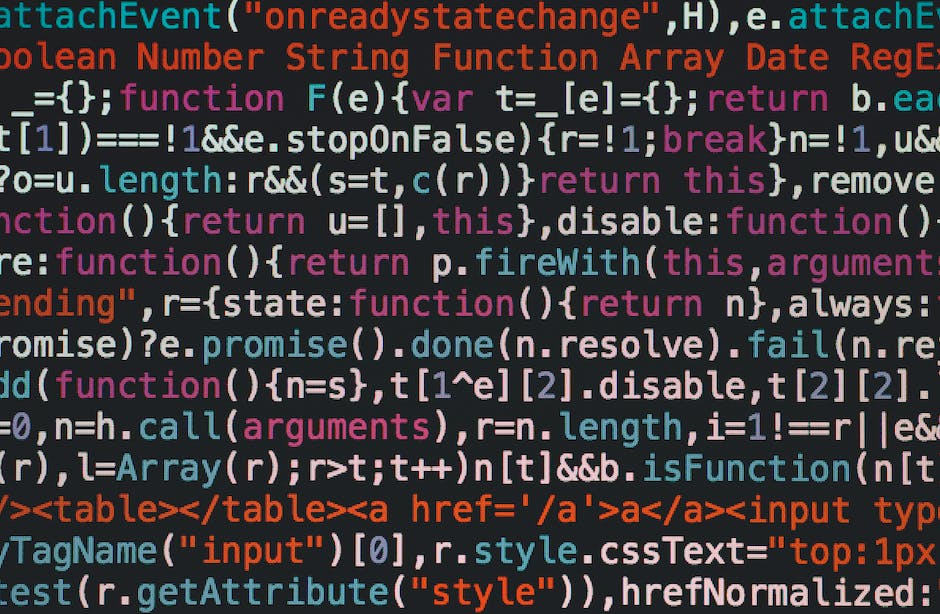As a cornerstone of modern programming, Python has solidified its place in a multitude of professional and academic fields. From data analysis to web development, its versatility and straightforward syntax make it an ideal choice for professionals venturing into programming. This journey through Python will cover topics ranging from rudimentary aspects, like variables, data types, and control flow, to the intricacies of Python’s libraries pivotal to data analysis and visualization. More so, we deem it crucial to delve into the advanced concepts, such as object-oriented programming, to get a encompassing understanding of what Python has to offer.
Understanding Python Basics
Python is, without debate, one of the most popular programming languages in the current tech scene, unbeatably powerful and versatile. Whether you’re a seasoned programmer desiring to broaden your’s expertise scope or a newbie just breaking into the world of coding, this is an excellent language to quench your digital thirst. Here are a few fundamental concepts of Python to get you started.
First off, Python is an interpreted, high-level, and general-purpose programming language. Its design philosophy emphasizes code readability, facilitated by its notable use of significant indentation. It’s highly appreciated for its clear, logic-based structure making it powerful yet extremely user-friendly, even for beginners.
Let’s delve into the major Python features:
- Dynamic Typing: Unlike other programming languages that require the type of every variable to be declared explicitly, Python’s flexibility allows you to change your variable types. This dynamism is excellent for quick prototype development and ad-hoc tasks, though it may pose difficulties in large projects.
- Easy Syntax: Python’s syntax is clear and intuitive, making it an excellent language for beginners. It supports English keywords rather than symbols, which simplifies the process of defining and reading code.
- Indentation: In Python, indentation goes beyond giving your code a tidy appearance. It’s critical to the code’s structure. Python uses indentation to define blocks of code, while other languages may rely on braces or parentheses. Though a bit tricky for beginners, mastering indentation contributes to clean, readable code.
- Object-Oriented: Python supports full-fledged Object-Oriented Programming (OOP). It allows the definition of classes along with composition and inheritance. Python doesn’t have access specifiers like public or private, which simplifies code development.
- Exception Handling: Python supports error handling through try, except, and finally keywords. It helps improve the robustness of the code and offers insights into reasons for code failure.
- Standard Libraries: Python’s rich standard libraries enable a wide range of functionalities. Whether you’re dealing with regular expressions, mathematical functions, databases, web protocols, you will find a library to satisfy your requirements.
- Embedded within Python: Python code can invoke C and C++ libraries. This makes Python a great choice for performance sensitive applications.
- Interpretation: As Python is an interpreted language, it can run on any system with Python interpreter installed, adding to its flexibility and ease of use.
In the future, Python’s domination does not show signs of faltering. It continues to be a popular choice in cutting-edge tech fields like AI and machine learning due of its versatility and simplicity. Understanding these fundamental concepts of Python unlocks a new realm of programming mastery to the ambitious tech enthusiast. True, it may be an easy language to learn, but it’s also a powerful tool in the hands of a skilled developer. Armed with Python, the future belongs to those who code.

Working With Python Libraries
Dynamically Maneuvering Data With Python Libraries
Python’s popularity as a powerful programming tool is fueled by its uncomplicated syntax, Object-Oriented Programming capabilities, and the comprehensive standard libraries it accommodates. Portraying Python’s dynamism goes beyond the use of its standard libraries or invoking C and C++ libraries. There’s a phenomenal treasure chest of Python libraries explicitly designed for data manipulation. So, let’s dive into the how-tos of fruitfully utilizing these libraries.
Python libraries, such as Pandas, Numpy, and Matplotlib, are sometimes referred to as the holy trinity for data scientists. They’re implicitly designed to streamline and optimize data manipulation tasks, aiding your journey through data-intensive terrains.
-
Pandas: The Pivot for Data Manipulation
Applying Pandas, primarily, gives you the superpower to manipulate, cleanse, filter, and combine disparate data forms. Realize these functionalities with key features like the DataFrame object for data manipulation with integrated indexing.
-
Numpy: Crunching Numbers
Consider Numpy – the numerical Python, when you’re equipped with numerical data or handling arrays. It provides a high-performance object, ndarray for powerful array manipulations. Exploit Numpy routines for quick and efficient numerical operations, so you spend less time idling.
-
Matplotlib: Visualize Data
Gather insights visually, by utilizing Matplotlib. Take advantage of this plotting library to create static, animated, and interactive plots. Turn heaps of raw data into consumable information, with beautiful, comprehensive visualizations.
To effectively harness these libraries, remember that installing and importing these libraries is the first move. With Python’s Package Index (PyPI) or well-loved pip command, fetch these libraries smoothly. Following the installations, you’ll be running ‘import pandas as pd‘, ‘import numpy as np‘, or ‘import matplotlib.pyplot as plt‘ in your Python script and voila, you’re set to channel these libraries to your advantage.
Efficient Data Manipulation isn’t the end of the boulevard with Python; it’s an important pit-stop in your tech ventures. As Python empowers us to drive AI advancements and Machine Learning breakthroughs, harnessing Python’s libraries specifically for data manipulation activities is undoubtedly a necessity.
Remember, mastering libraries that aid your precise needs proves more beneficial than being an all-rounder. Soilihen the knowledge of the libraries you need. And when Python offers such a repertoire of data manipulation libraries, we’re less manipulating data than orchestrating it. Investing time in Python libraries for data manipulation is an investment in future technology solutions. Happy Pythoning, tech enthusiasts!

Advanced Python Concepts
Heading: Classes and Objects in Python – A Simplified Understanding
Making an appearance in the dense realm of programming languages, Python is imbued with the power of flexibility and is heralded as beginner-friendly, teasing out newbies’ enthusiasm. Clarity and simplicity reign supreme in Python, and this couldn’t be more obvious when dealing with classes and objects.
In Python, every element is an object, an apt testament to Python’s object-oriented approach. The code is neatly structured into mutually independent objects, making Python a cynosure for problem-solving and automation enthusiasts. We have already spoken about object-oriented programming; it’s a methodology that structures code around data, or objects, rather than functions and logic. This method defines the corresponding behavior inside classes. The tie between classes and objects is as strong as the bond between blueprints and buildings.
Moving forward, we need to decode classes. Annealing common features into a single entity is what a class does in Python. Think of a class as a template or a blueprint that helps define the characteristics (known as attributes) and behaviors (known as methods) that an object will have. This entity could be anything from a real-world object like a car or something less tangible like a process.
Let’s talk about objects. In Python, an object is the physical embodiment of a class. Anything in the Python universe is an object, including integers, strings, even functions. Every object has a type, demonstrates some behavior, and holds some state. For instance, given a class Car, objects could be specific cars such as a Ferrari, a Tesla, or a Jaguar. Each of these objects would use the Car’s blueprint but have different states given their different makes.
Moving on, when a class is defined, no memory gets allocated. However, their story changes when they are instantiated, i.e., when an object is created. This creation sequence from classes is known as instantiation. Once instantiated, the object occupies a space in the memory, with the size of space being dependent on the complexity of the object.
Python also offers tools to modify and manipulate objects after their creation. It introduces concepts like inheritance, where a new class can inherit attributes and behaviors from an existing class while subtly offering an option of adding or refining some features. This process of adding new methods to a class or the ability to modify existing ones provides the flexibility to craft objects that better fit the needs of a specific problem.
The ability to bundle data and methods together to shape new classes and objects offers a path to elegantly structure code, improving both readability and reusability. It’s this robust and simplified handling of classes and objects that make Python an object-oriented powerhouse and a favored tool to solve complex problems efficiently.
Making the transition from a generic programming enthusiast to a Python guru necessitates understanding classes and objects. The fluency in Python’s world hinges on these concepts, inextricably linked to other Python fundamentals. So, dip your toes in, tweak classes, mould objects, and process the Pythonic magic first hand.

The journey through Python, we have embarked on, helped us grasp its foundational concepts and appreciate the utility of its libraries like NumPy and Pandas. We have unraveled Python’s inherent simplicity and power, especially with the exploration of its object-oriented programming. We have deciphered the role of classes, objects, and inheritance, along with the pivotal aspect of exception handling. By so doing, we have gained a well-rounded knowledge, well on our path to proficiency in Python. As we seek to bolster our understanding further, every code written, every problem solved, will accelerate us on this journey towards becoming Python experts.
Unlock the power of AI writing with Writio. This article was magically generated by Writio, your trusted content companion.




GIPHY App Key not set. Please check settings